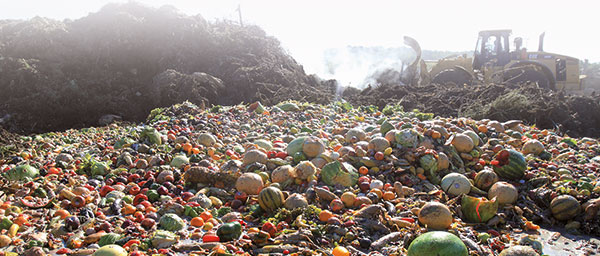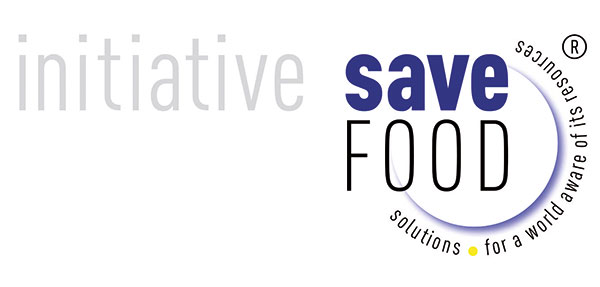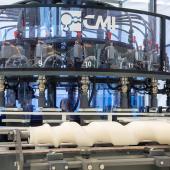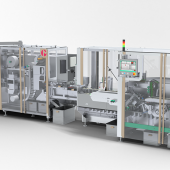Good and practical ideas: Save Food
 Interpack promotes a reflection on food wastage, hence to some extent also reinterpreting the social value of packaging. Bernd Jablonowski, Director interpack & Save Food, Messe Düsseldorf GmbH, reviews the work carried out and the short and longterm prospects of the undertaking launched in 2011.
Interpack promotes a reflection on food wastage, hence to some extent also reinterpreting the social value of packaging. Bernd Jablonowski, Director interpack & Save Food, Messe Düsseldorf GmbH, reviews the work carried out and the short and longterm prospects of the undertaking launched in 2011.

For some time interpack no longer wishes to be just seen as the show of large figures, but claims a different role, as a strong, competent and proactive industrial entity as regards the market and public opinion.
It is with this spirit that, in 2011, it launched Save Food, a stable study platform on the problems associated with food loss and food waste the world over, calling together not only the food supply chain and packaging stakeholders, but also the political institutions and public administrations, the world of research and non government associations.
In this interview Bernd Jablonowski gives us a detailed account of the undertaking.
 What are the aims of the Save Food initiative?
What are the aims of the Save Food initiative?
Each year around 1.3 billion tons of food perishes or is thrown away. At the same time just one quarter of this volume would be sufficient to feed around 800 million starving people all over the world. The Save Food initiative is seeking to make a contribution to solving this dilemma. In this context we now have a joint initiative by the Food and Agriculture Organization of the United Nations (FAO), the United Nations Environment Programme (UNEP) and Messe Düsseldorf. Their aim is to push harder for inclusion of the food waste and loss theme on the political as well as economic agenda and to firmly establish it there. To this end, the Save Food initiative is concentrating on four core points: the establishing of public awareness for the problem of food loss and wastage, the bundling of the strengths and know-how of public and private organisations, following on from this the development of fundamental strategies as well as the creation and implementation of specific investment programmes.
What distinguishes Save Food from the other initiatives concerned with the themes of food loss and wastage?
Packaging and process technology incorporating smart solutions can make a decisive contribution when it comes to the avoidance of food loss and wastage. To this end, the Save Food initiative integrates the entire food value chain - from the producers and manufacturers through to the processing industry, the supply chain and retail up to the consumers. That is unique in this form.
So what contribution exactly can the players from the packaging industry make to solving this problem?
In this regard, the private sector is the driving force as the producer, processor and supplier for the consumers. In this process the players from the packaging and process industry assume the connecting key role. In this connection for example, due to the incorrect storage of food at the production location and the use of unsuitable packaging during the supply chain, a large part of the food is already lost on its way to the consumer. This is a problem particularly in the more underdeveloped countries. Up to forty percent of the food perishes there each day before it even reaches the consumer. By contrast, in the industrial nations, the problem lies more in food waste. Here thirty percent of unconsumed food is thrown away. Specific examples, which the players from the packaging industry and process technology sectors can use to counteract this trend, include smaller packaging, more comprehensive use of smart packaging solutions or other innovative technologies and processes, such as for example aseptic filling facilities. This expertise is therefore incredibly important for the success of the initiative.
The Save Food initiative has now already been in existence since 2011. What specific successes has it registered so far?
Since the launch of the initiative at interpack 2011, we have been able to sensitize not only the general public, but also numerous, top-ranking, relevant decision-makers to this theme - and we have done so in an international framework. For example, through our presentation in the Permanent Mission of Germany to the United Nations in Rome to mark the day of German Unity, at Process Expo in Chicago or through dialogue events within the framework of the Food Processing & Packaging Exposyum (FPPE) in Kenya in November 2013. At this event in Nairobi not only was a broad exchange initiated between around 650 experts from Kenya and the surrounding East African nations, it also represented an important phase on the way to taking specific measures against unnecessary food loss in the early stages of the production chain.
In addition, with Nestlé, we recently witnessed the 100th member joining our initiative. In the meantime our partners not only include global players such as Bayer, Tetra Pak, Dow Chemical, Henkel, Maersk or Bosch, but also numerous small and medium-sized companies from all sectors of the food value chain. In early 2013 the United Nations Environment Programme (UNEP) then came on board as a partner of the initiative. This is a development which we can really be proud of.
And what are the next points on the agenda?
After the first Save Food partner event took place at the FAO in Rome at the end of last year with more than 150 participants from all over the world, the second global Save Food Congress within the framework of interpack represents the next milestone in intensifying even further the cooperation within the network and taking on further specific projects aimed at the reduction of food loss and wastage. To this end, from 7 to 8 May, in the run-up to, and on the first day of interpack in Düsseldorf, we are bringing together international stakeholders from the areas of politics, economics, research and civil society in an even larger framework for a mutual exchange of views.
The content side of the first Congress day will be handled by the organizations, the second day by the industry. To this end, from 8 to 14 May, as the leading international trade fair, interpack will provide the ideal platform for the packaging sector and the associated process industry, with the aim of bringing together the most important industry experts and connoisseurs. With this approach, the industry can contribute its competence and expertise, while at the same time, the forces from the private and public sector are bundled for the attainment of the joint objective.
Coupled with this, the Innovationparc Packaging held under this year’s Save Food motto is calling on companies to present their sustainable concepts aimed at clearly reducing worldwide food losses. In the Fair Tent between Hall 2 and 3, the visitors and exhibitors from the food industry, retail, packaging and logistics sectors can thus therefore exchange their future-orientated ideas in total exhibition space of 2,500 m², ensuring that the next steps in the global battle against hunger can be initiated.
What is the outlook for the next few years, and how long, in your opinion, will it take for the initiative to reach its objectives?
Worldwide food loss and waste represent one of the greatest problems of our times. A task on this scale can most definitely not be performed by tomorrow. At the same time, all the parties involved from the entire food value chain must come together to work on a joint and universal approach. It is therefore obvious that we have really set ourselves no easy target. And despite all the previous success, we definitely still have a long way to go until we have reached the targets that we have set ourselves. Nevertheless, the great response and the broad awareness, which we have encountered since the founding of the initiative during the last interpack in 2011, have made me very confident and show that we are on the right path. Save Food is a theme which requires awareness and our personal responsibility. Every individual should look at themselves when it comes to preventing food loss and waste. Only then will we ultimately all make really significant progress.

















